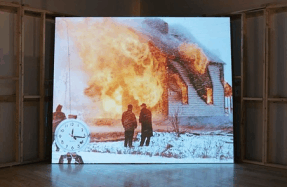Identity Politics Economics
In 2012, an artist I admire curated a highly anticipated exhibition of 101 Toronto artists, and 94 of them were white. I was so incensed that I wrote an MFA thesis about it. “Why,” ranted my thesis, “doesn’t Canadian art reflect national demographics? Whose art history is canonical? Who truly owns the gallery space?” Within just five years, my paper was outdated. In 2017 the Art Gallery of Ontario (AGO) unveiled Every. Now. Then: Reframing Nationhood, a retrospective deliberately honouring Toronto artists who are Black, Indigenous and people of colour. The same year the gallery inaugurated the formal position of Indigenous curator, first appointed to Wanda Nanibush. She radically established Anishinaabemowin as a third language on most AGO wall texts, a groundbreaking precedent for a major Canadian cultural institution, and in 2018 the AGO’s JS McLean Centre for Canadian Art was renamed and reinstalled to include and integrate Indigenous art.
How did
You’re reading a preview, subscribe to read more.
Start your free 30 days





